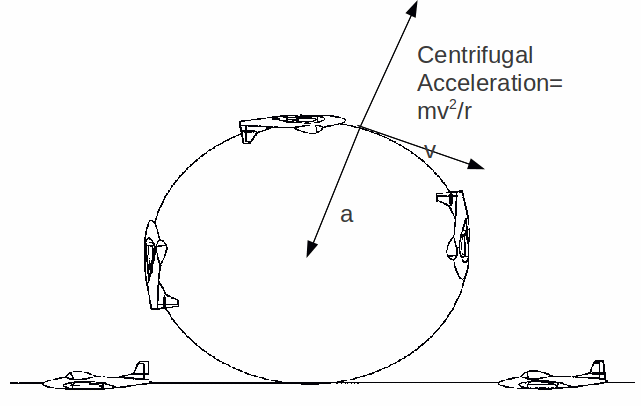The g-force is acceleration experienced by an object is due to the total (non gravitational) force acting on a body. The term is most frequently applied to astronauts and pilots, who experience high g – forces in training and during their career.
A 1 g force is experienced by a object on the Earth's surface as a reaction force from the ground, preventing the object going into free fall. Acceleration higher than this are produced by pilots forcing their planes into tight turns, experiencing (centrifugal) g - forces equal to![]() or racing drivers accelerating very quickly. A driver in a Ferrari accelerating at maximum is reputed to be unable to exert enough force to be able to reach out and take a money note fixed to the dashboard. Pilots in training are subjected to high g – forces by placing them in rapidly rotating seats.
or racing drivers accelerating very quickly. A driver in a Ferrari accelerating at maximum is reputed to be unable to exert enough force to be able to reach out and take a money note fixed to the dashboard. Pilots in training are subjected to high g – forces by placing them in rapidly rotating seats.
Pilots can experience g – forces of 9 - 12 g in aerobatic manoeuvres, but they are of course required not to to lose consciousness during these manoeuvres.

In crashes, humans have briefly experienced forces of up to 100 – g.
Objects allowed to free-fall under the influence of gravity feel no g-force, as demonstrated by the "zero-g" conditions inside a freely-falling elevator falling toward the Earth's center (in vacuum), or (to good approximation) conditions inside a spacecraft in Earth orbit. These are examples of coordinate acceleration (a change in velocity) without proper acceleration. Since the g-force felt is always a measure of proper acceleration (which, in these cases, is zero, even though the objects are freely changing velocity due to gravity) all of these conditions of free-fall produce no g-force. The experience of no g-force (zero-g), however it is produced, is synonymous with weightlessness.
